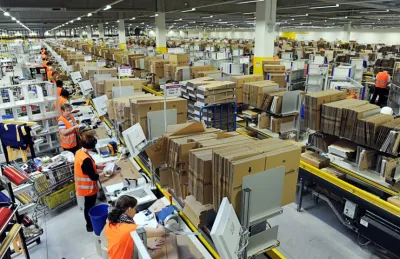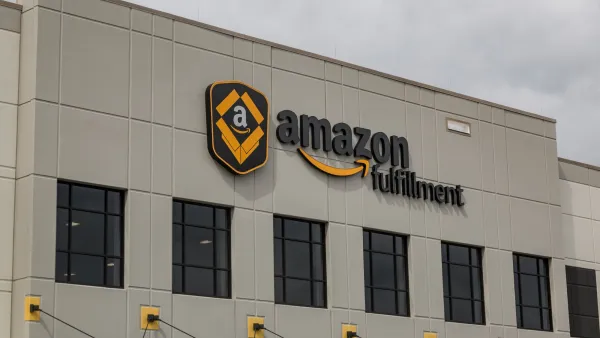Amazon is moving more moving more products than ever, and the company is expanding its physical footprint to keep up with the trends.

"Nine months into a global health crisis, buying online has become the default shopping strategy for many people, especially during the holiday season as COVID-19 runs rampant. In 2019, the company delivered about 2.5 billion packages in the US — roughly 20 for every household — a number analysts expect to jump by 20 percent or more this year," according to an article by Tim Logan and Janelle Nanos.
With businesses booming, Amazon is preparing for a future that maintains this level of widescale reliance on delivery services.
"That’s why it’s betting big on a web of warehouses and delivery centers in major US cities, a shipping network on a scale never before seen. By the end of 2020, industry analysts expect, Amazon will have added roughly 100 million square feet of warehouse space to its portfolio, a 50 percent jump from what it had just one year ago."
The company's real estate expansion is already visible in Eastern Massachusetts, according to the article—both in new sorting centers, shipping hubs, and "last-mile" shipping centers.
The company's expansion is already encountering opposition from potential neighbors, along with resulting setbacks.
FULL STORY: To deliver more goods faster, Amazon is getting closer to your door

National Parks Layoffs Will Cause Communities to Lose Billions
Thousands of essential park workers were laid off this week, just before the busy spring break season.

Retro-silient?: America’s First “Eco-burb,” The Woodlands Turns 50
A master-planned community north of Houston offers lessons on green infrastructure and resilient design, but falls short of its founder’s lofty affordability and walkability goals.

Delivering for America Plan Will Downgrade Mail Service in at Least 49.5 Percent of Zip Codes
Republican and Democrat lawmakers criticize the plan for its disproportionate negative impact on rural communities.

Test News Post 1
This is a summary

Test News Headline 46
Test for the image on the front page.

Balancing Bombs and Butterflies: How the National Guard Protects a Rare Species
The National Guard at Fort Indiantown Gap uses GIS technology and land management strategies to balance military training with conservation efforts, ensuring the survival of the rare eastern regal fritillary butterfly.
Urban Design for Planners 1: Software Tools
This six-course series explores essential urban design concepts using open source software and equips planners with the tools they need to participate fully in the urban design process.
Planning for Universal Design
Learn the tools for implementing Universal Design in planning regulations.
EMC Planning Group, Inc.
Planetizen
Planetizen
Mpact (formerly Rail~Volution)
Great Falls Development Authority, Inc.
HUDs Office of Policy Development and Research
NYU Wagner Graduate School of Public Service




























